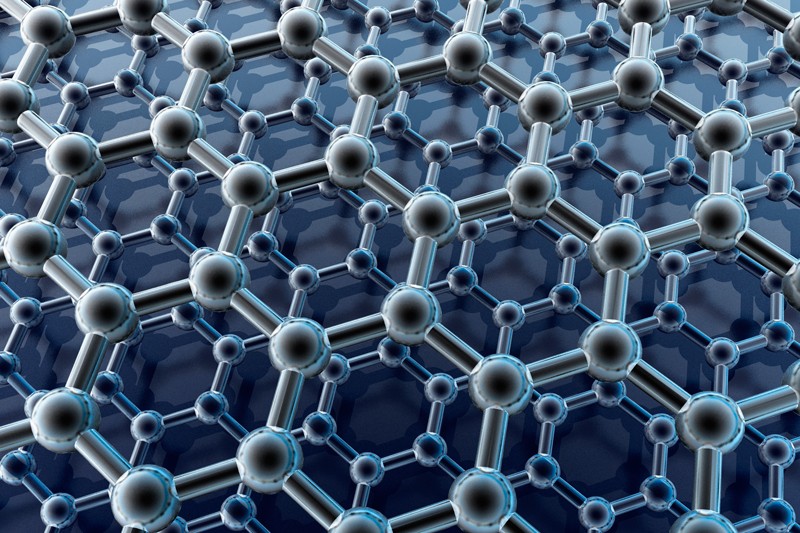Most superconductors work only at temperatures close to absolute zero. Even ‘high-temperature’ superconductors are called that only in a relative sense: the highest temperature at which they conduct electricity without resistance is around −140 ºC. A material that displayed the property at room temperature — eliminating the need for expensive cooling — could revolutionize energy transmission, medical scanners and transport.
Physicists now report that arranging two layers of atom-thick graphene so that the pattern of their carbon atoms is offset by an angle of 1.1º makes the material a superconductor. And although the system still needed to be cooled to 1.7 degrees above absolute zero, the results suggest that it may conduct electricity much like known high-temperature superconductors — and that has physicists excited. The findings are published in two Nature papers1,2 on 5 March.
If confirmed, this discovery could be “very important” to the understanding of high-temperature superconductivity, says Elena Bascones, a physicist at the Institute of Materials Science of Madrid. “We can expect a frenzy of experimental activity over the next few months to fill in the missing parts of the picture,” says Robert Laughlin, a physicist and Nobel laureate at Stanford University in California.
Superconductors come broadly in two types: conventional, in which the activity can be explained by the mainstream theory of superconductivity, and unconventional, where it can’t. The latest studies suggest that graphene’s superconducting behaviour is unconventional — and has parallels with activity seen in other unconventional superconductors called cuprates. These complex copper oxides have been known to conduct electricity at up to 133 degrees above absolute zero. And although physicists have focused on cuprates for three decades in their search for room-temperature superconductors, the underlying mechanism has baffled them.
In contrast to cuprates, the stacked graphene system is relatively simple and the material is well-understood. “The stunning implication is that cuprate superconductivity was something simple all along. It was just hard to calculate properly,” says Laughlin.
Magic trick
Graphene already has impressive properties: its sheets, made of single layers of carbon atoms arranged in hexagons, are stronger than steel and conduct electricity better than copper. It has shown superconductivity before3, but it occurred when in contact with other materials, and the behaviour could be explained by conventional superconductivity.
Physicist Pablo Jarillo-Herrero at the Massachusetts Institute of Technology (MIT) in Cambridge and his team weren’t looking for superconductivity when they set up their experiment. Instead, they were exploring how the orientation dubbed the magic angle might affect graphene. Theorists have predicted that offsetting the atoms between layers of 2D materials at this particular angle might induce the electrons that zip through the sheets to interact in interesting ways — although they didn’t know exactly how.
The team immediately saw unexpected behaviour in their two-sheet set-up. First, measurements of graphene’s conductivity and the density of the particles that carry charge inside it suggested that the construction had become a Mott insulator2 — a material that has all the ingredients to conduct electrons, but in which interactions between the particles stop them from flowing. Next, the researchers applied a small electric field to feed just a few extra charge carriers into the system, and it became a superconductor1. The finding held up in experiment after experiment, says Jarillo-Herrero. “We have produced all of this in different devices and measured it with collaborators. This is something in which we’re very confident,” he says.
A material made up of two layers of graphene, twisted at an angle of 1.1º (illustrated, right), show superconducting properties.Courtesy of the researchers
The existence of an insulating state so close to superconductivity is a hallmark of unconventional superconductors such as cuprates. When the researchers plotted phase diagrams that charted the material’s electron density against its temperature, they saw patterns very similar to those seen for cuprates. That provides further evidence that the materials may share a superconducting mechanism, says Jarillo-Herrero.
Finally, although graphene shows superconductivity at a very low temperature, it does so with just one-ten-thousandth of the electron density of conventional superconductors that gain the ability at the same temperature. In conventional superconductors, the phenomenon is thought to arise when vibrations allow electrons to form pairs, which stabilize their path and allow them to flow without resistance. But with so few available electrons in graphene, the fact that they can somehow pair up suggests that the interaction at play in this system should be much stronger than what happens in conventional superconductors.
Conductivity confusion
Physicists disagree wildly on how electrons might interact in unconventional superconductors. “One of the bottlenecks of high-temperature superconductivity has been the fact that we don’t understand, even now, what’s really gluing the electrons into pairs,” says Robinson.
But graphene-based devices will be easier to study than cuprates, which makes them useful platforms for exploring superconductivity, says Bascones. For example, to explore the root of superconductivity in cuprates, physicists often need to subject the materials to extreme magnetic fields. And ‘tuning’ them to explore their different behaviours means growing and studying reams of different samples; with graphene, physicists can achieve the same results by simply tweaking an electric field.
Kamran Behnia, a physicist at the Higher Institute of Industrial Physics and Chemistry in Paris, is not yet convinced that the MIT team can definitively claim to have seen the Mott insulator state, although he says the findings do suggest that graphene is a superconductor, and potentially an unusual one.
Physicists cannot yet state with certainty that the superconducting mechanism in the two materials is the same. And Laughlin adds that it is not yet clear that all the behaviour seen in cuprates is happening in graphene. “But enough of the behaviours are present in these new experiments to give cause for cautious celebration,” he says.
Physicists have been “stumbling around in the dark for 30 years” trying to understand cuprates, says Laughlin. “Many of us think that a light just switched on.”


